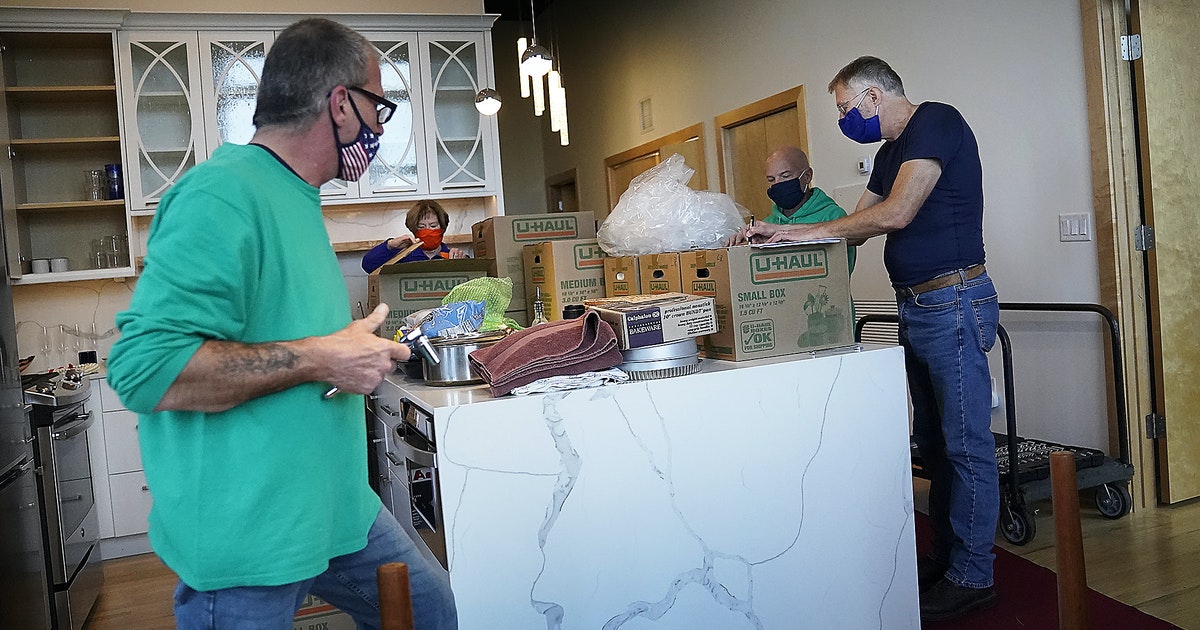Lots of people left Minneapolis and St. Paul last year and this year, but just as many people seemed eager to live in the two cities, new data on home sales shows.
The Minneapolis and St. Paul share of all metro-wide homes sales hit a six-year high in the 12 months ended June 30, the report from the Minneapolis Area Realtors (MAR) said. And for most of those months, the sales action in the cities outpaced the suburbs, where far more people in the Twin Cities region live.
But while more people sold homes in the cities, they were met by higher numbers of buyers — quashing concerns of an exodus from Minneapolis and St. Paul.
“Not to say that there aren’t concerns, but the draws of urban living are still there,” said David Arbit, MAR’s director of research and economics.
The association undertook the study to explore the impact of urban unrest, rising crime and the COVID-19 pandemic on the housing market in the Twin Cities.
While there’s no evidence of disinvestment in the central cities, the economic and social tumult of the last 18 months has created an unprecedented “churning,” Arbit said.
Between July 2020 and July 2021, the year-over-year increase in signed purchase agreements in Minneapolis outpaced that of the suburbs. Starting in July 2020, the city has seen 13 consecutive months of year-over-year sales gains. And home prices in the city have increased for 17 of the last 18 months.
“I’m sure there were some who were rattled by the unrest, but a lot of people were just looking for more space and more readily found it a little further out,” Arbit said. “As folks felt less anchored to their physical work spaces, it did open up some options.”
The frenzy neared a peak in the third quarter, or July through September, of 2020. Home sales in Minneapolis posted annual gains that were about twice the rate of the suburbs that quarter. Home buying in the suburbs also soared then, but home selling in those areas tapered.
But by at least one metric, there’s some evidence that buyers were outpacing sellers more in the suburbs than the city: Between July 2020 and February 2021, year-over-year inventory levels (the number of active listings) increased in Minneapolis but declined in the suburbs.
Since this summer, however, inventory levels in Minneapolis have leveled off and have been falling. In the suburbs, inventory is rising.
Arbit noted that although urban house listings increased steeply last year, it’s a trend that began in mid-2018. The same was true in the suburbs, except for a pause in 2020 when house listings in the suburbs began to plummet.
The turnover that’s happening across the metro, executives at MAR say, in part reflects demographic changes that aren’t going away anytime soon. Most notably, a growing number of millennials are getting married, having families and buying homes. For many, that means a move to the suburbs, where they’re more likely to find larger houses with bigger yards.
While the report closely tracks buyer and seller activity by a variety of quantitative metrics, it doesn’t provide any definitive insights into why there’s been so much turnover. But with public safety in becoming an increasing concern in and around Minneapolis and St. Paul, there’s plenty of speculation.
Daryl Fairweather,chief economist for Redfin, said that while people move for plenty of positive reasons, crime is a major factor, especially among homeowners.
Half of allhomeowners who moved between March 1, 2020, and the first week of August 2020 said that crime and safety was an important factor in determining where they moved, according to a Redfin survey of more than 1,000 residents across the U.S. They said it factored “a lot” into their decision, or was the most important factor. About 35% of renters said the same. Their top issue was cost of living.
Homeowners tend to care more about public safety than renters, Fairweather said, because they tend to be older and have an investment at risk. She also said nearly every major metro region in the country saw a surge in urban house listings and a corresponding increase in sales over much of the past year.
She said the pandemic has also played a major role in where people are choosing to live and says that there are already indications that price appreciation in many urban areas is poised for stronger growth as attractions that draw people to urban areas reopen.
“People live in cities to be close to work and restaurants and other attractions,” Fairweather said. “When you take that away, you’re left with all the negative parts of living in the cities.”
It remains to be seen, however, how the role of remote work will ultimately affect buyers and sellers. It’s critical, she said, that cities get control of crime and do whatever they can to maintain a strong work force.
“Now that remote work is ubiquitous, some may have to work on improving safety and other quality of life factors to retain and attract residents,” she said. “Because as wealthy residents leave, they take tax dollars with them, leaving cities with less resources to address safety concerns for remaining residents.”
Andrew Babula, director of the real estate program at the University of St. Thomas Opus College of Business, said that the housing market in the Twin Cities metro area has been affected by an unprecedented set of circumstances — all at the same time.
“A lot of other things drive the decision,” he said. “But the trend is definitely in favor of high activity and growth in Minneapolis.”
He’s not, however, ruling out the possibility that concerns about public safety could become a major deterrent for most buyers.
“It’s yet to be seen if that’s going to play a role,” he said. “If that’s sustained, then it would wear on buyers, but so far that hasn’t been the case.”
